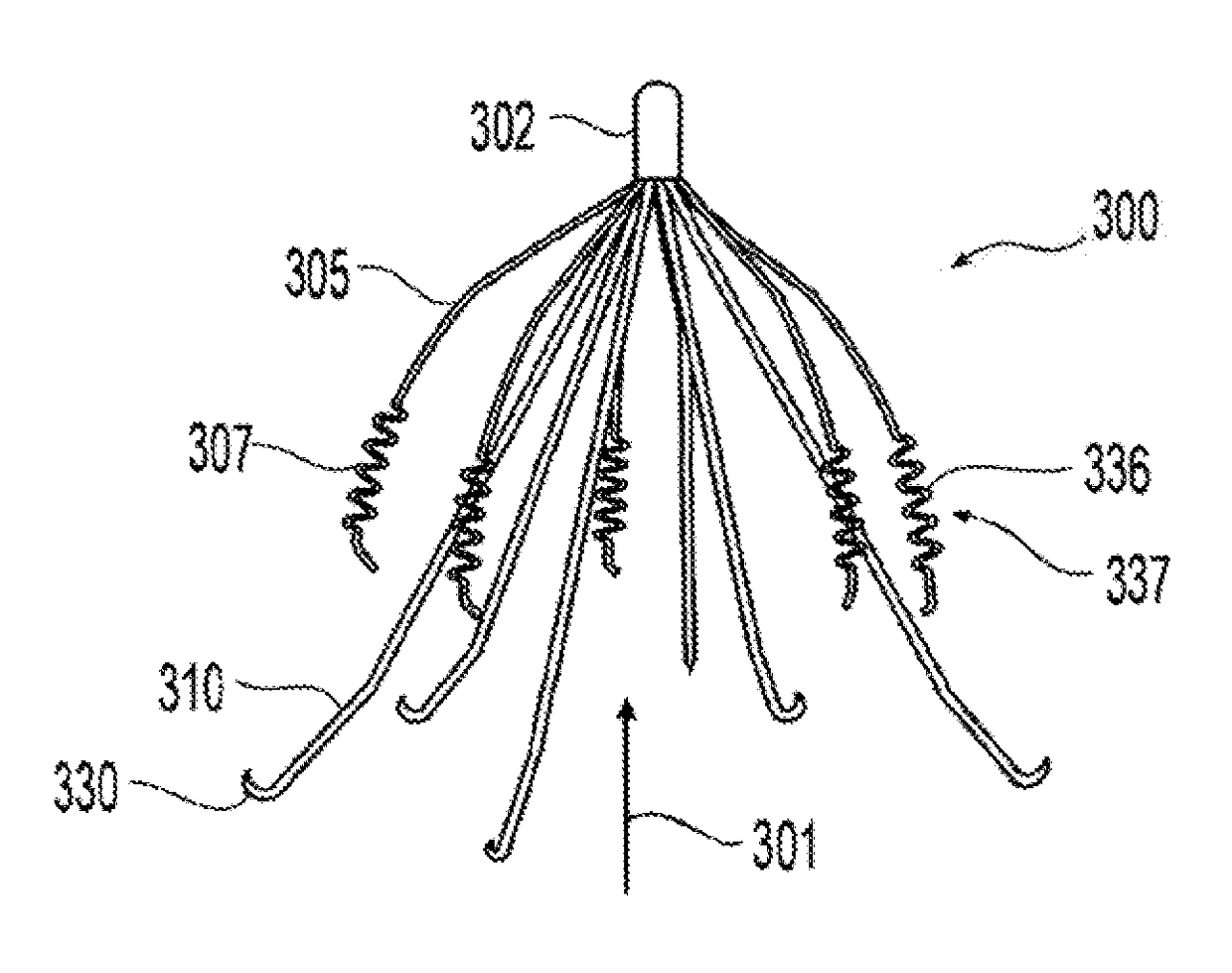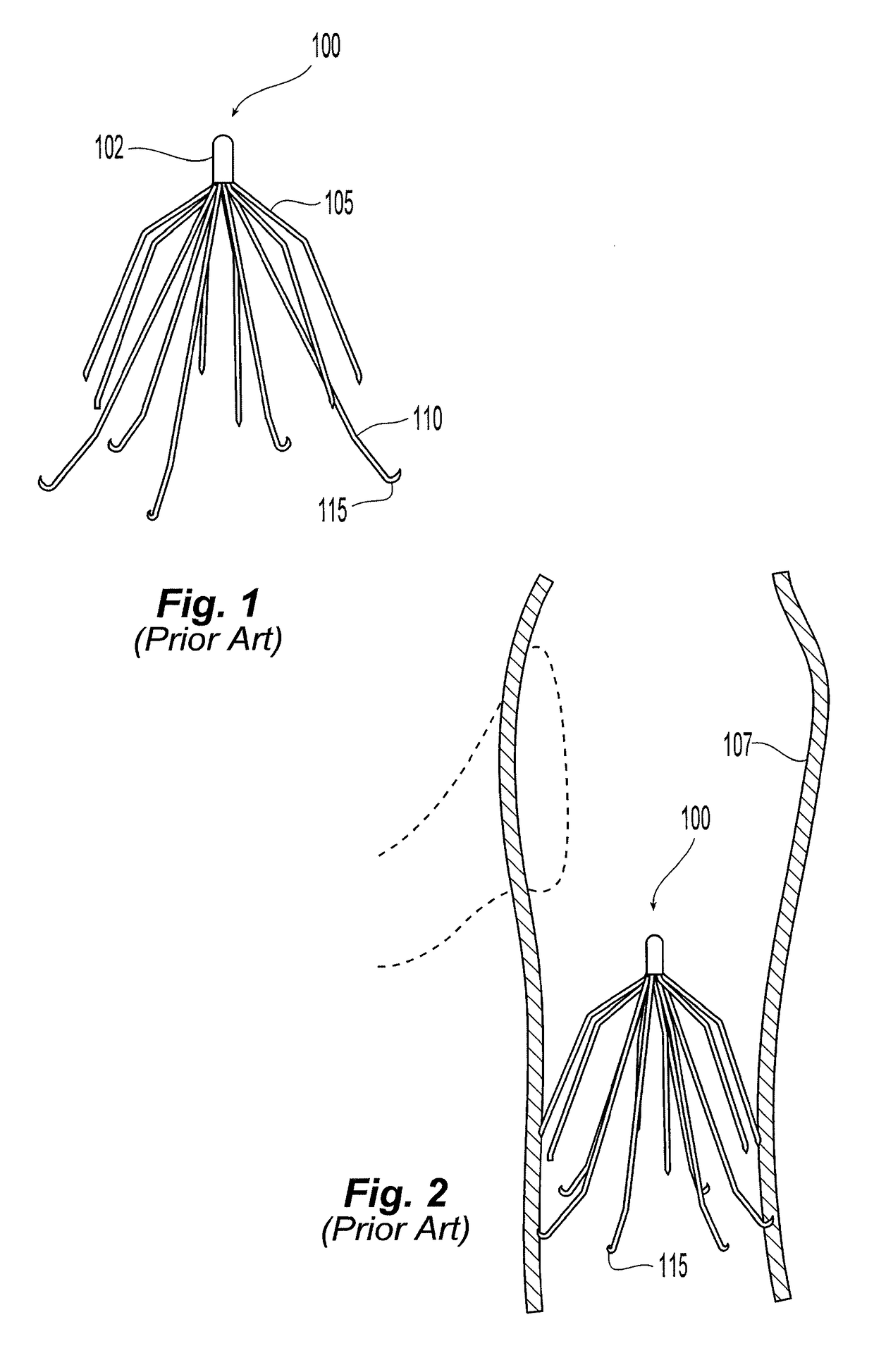Inferior vena cava filter with stability features
a technology of stability features and inferior vena cava, which is applied in the field of filter devices, can solve the problems of difficult atraumatic removal of filters, and achieve the effect of easy removal
- Summary
- Abstract
- Description
- Claims
- Application Information
AI Technical Summary
Benefits of technology
Problems solved by technology
Method used
Image
Examples
Embodiment Construction
[0050]Referring to FIGS. 1 and 2, the filter 100 is shown in an expanded state. Preferably, the filter is made of metal wires held together by a hub where they are joined, for example, by plasma welding. The wires are preferably made of shape memory alloy with a martensite phase that allows the wires to be straightened so as to enable insertion in a catheter and deployment therefrom. In the austenitic phase, the filter recovers to its expanded state, which is illustrated.
[0051]The filter 100 has a double basket or trap design with first extension elements 105 forming one basket or trap and second extension elements 110 forming a second basket or trap. Each of the extension elements 105, 110 have one end substantially centrally interconnected at the longitudinal axis of the filter 100 and a remote or distal end that extends radially away from the longitudinal axis. Alternatively or in addition to, where the centrally interconnected ends of the extensions elements 105, 110 are axially...
PUM
 Login to View More
Login to View More Abstract
Description
Claims
Application Information
 Login to View More
Login to View More - R&D
- Intellectual Property
- Life Sciences
- Materials
- Tech Scout
- Unparalleled Data Quality
- Higher Quality Content
- 60% Fewer Hallucinations
Browse by: Latest US Patents, China's latest patents, Technical Efficacy Thesaurus, Application Domain, Technology Topic, Popular Technical Reports.
© 2025 PatSnap. All rights reserved.Legal|Privacy policy|Modern Slavery Act Transparency Statement|Sitemap|About US| Contact US: help@patsnap.com



